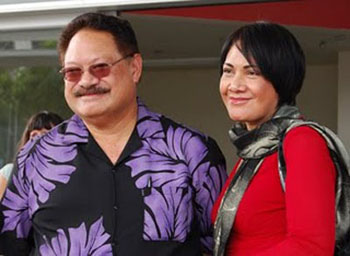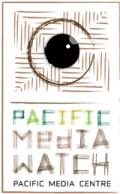
Journalism schools around New Zealand are recognising the need to offer specific education to diverse ethnic groups in order to attract them to the industry. AUT University is introducing the country’s first Graduate Diploma in Pacific Journalism for next year.
Olivia Caldwell
AUCKLAND: When a Thai family’s pain and anguish from the Christchurch earthquake was printed on the front page of the Dominion Post earlier this month, Asia New Zealand Foundation’s media adviser Charles Mabbett was more than happy to read on.
Although Mabbett is sympathetic to the family’s loss of their livelihood through their damaged restaurant, it was one of the few articles that he believes has displayed good ethnic reporting.
As a media officer for an organisation dedicated to building New Zealanders’ knowledge and understanding of Asia, Mabbett takes notice of any media coverage the Asian community gets. He says that although he has seen improvements over the last 20 years there is still some way to go.
“We need to see a shift in decision making from up top. They pigeonhole these communities when they are a part of the wider community just like everyone else. We just need to have an increase in direction in newsrooms. They need to show that migrant communities are New Zealanders too.”
Mabbett says that to include diverse ethnic training in journalism education is a “no brainer” and there is a need to develop cultural skills for young journalists.
Cultural and ethnic education within journalism schools is an issue loudly echoed by New Zealand Herald columnist Tapu Misa. She says at the very minimum, trainee journalists should be learning the basics of Maaori, Pacific Island and Asian cultures and that these elements should be compulsory in today’s courses.
“We are a bicultural nation undeniably. There is not always one way of looking at things. If you don’t learn this you are limited and you get left behind,” she says.
More critical
“It is more critical than the likes of your short hand. There is the argument about specialisation, but when you are writing about housing, politics, where does it [cultural awareness] not come in?”
Misa says a quick fix of getting one Pacific Island or Maaori reporter into a newsroom to report on ethnic issues is not the answer. Improvements have to be made before entering the newsroom because “you can’t understand the argument if you don’t know the history”.
She says the lack of cultural training does show in our mainstream media and they don’t tend to cover ethnic issues as well as they could. She highlights newsroom composition and enthusiasm as factors for this, but says there is recognition that ethnic reporting is important, especially in Auckland.
“We have to reflect Auckland and we have to be proactive about it. You can’t just do one story here and there, it has to be consistent. We have a big Pacific Island and Asian population so we must reflect it.”
Looking at journalism courses across the country there are hints of cultural awareness training. AUT will next year begin its new Graduate Diploma in Pacific Journalism aimed at addressing the shortage of Pasifika journalists in New Zealand.
The university is currently recruiting a Pasifika journalist and educator to run this programme. It also hosts the annual Pacific Islands Media Association (PIMA) conference – the next one is on Friday – and sponsors two Pasifika communications scholarships a year.
Too general
Associate professor and director of AUT’s Pacific Media Centre Dr David Robie says the objective of new diploma is to provide journalists with a greater understanding in reporting on the region and the issues because much journalism training is too general.
“While general journalism education provides the basic skill level, graduate and postgraduate journalism studies should be far more challenging and provide an environment where journalists are engaging critically with the industry and taking things to a new level.”
With a background as an international news reporter and editor, Dr Robie believes New Zealand media rarely provide in-depth coverage of Asia-Pacific news.
“New Zealand news media are extremely insular and put very little effort into specialised international reporting. The Asia-Pacific reporting that is done is generally framed with a New Zealand angle. The result is very superficial and often ill-informed coverage. Our sporadic reporting of the South Pacific is a glaring example of this.”
The PMC established Pacific Scoop website www.pacific.scoop.co.nz in partnership with Scoop Media last year to boost Asia-Pacific reporting. Student journalists from Fiji, New Zealand and Papua New Guinea contribute along with a network of seasoned journalists.
Jim Tucker, ex journalist and now journalism educator at Whitireia, says a graduate diploma could be pitching a little high in terms of a remedy. He says these sorts of initiatives need to be twinned up with talent identification across schools and universities.
Tucker himself is a pioneer for recognising good ethnic reporting and so in 2007 he started the New Zealand Excellence in Reporting Diversity awards. He says that celebrating the good work that is done by reporters is important.
“These awards are just one way of taking to the attack of poor performance in ethnic reporting. I call it the Pollyanna approach, but I am optimistic that things will improve.”
Mainstream underdone
He says that apart from one or two journalists, mainstream media in terms of diverse reporting is not done well enough.
“We only see these communities in mainstream news if they have done something wrong or if they’re having a food festival. So we get this picture in our head that they are either full of crime or colourful people,” he says.
“Advertising are thinking well ahead of editorial, we are seeing more than just white faces in advertising and our newsrooms still haven’t caught up.”
He says the biggest problem faced is within Auckland, as the news media here have not responded well in proportion with their ethnic population. He says that there is a commercial imperative that gets in the way, but to watch for changes because the media cannot ignore the fact that nearly 50 percent of the Auckland population has an ethnic background other than European.
Alan Samson, Massey University journalism lecturer and research associate for the Pacific Media Centre, says the economic argument in newsrooms is a difficult one. He says struggling newspapers generally report local news quite “fiercely” which is economically sensible, but they are frequently criticised for their poor international coverage.
“Personally, I don’t [think the media cover of Asia Pacific news well enough]. We are good at covering coups and tsunami and Apec meetings, but otherwise vast tracts of the region are anonymous to us. That aside, generally, I think, things are being tackled in the right way – especially encouraging students to broaden their horizons.”
Samson says all in all, diverse ethnic training within universities will benefit the entire industry because the emerging journalists coming through will have more knowledge and interest in Asia and the Pacific.
“Certainly there is a growing awareness of the importance of our near neighbours, culturally and economically. And most of the big papers now have a pool of highly aware young reporters able to report on Pacific matters. Whether papers write enough about the Pacific and Asia, of course, is a different issue.”
Olivia Caldwell is a Postgraduate Diploma in Communication Studies student on the Asia-Pacific Journalism course at AUT University.
The new Graduate Diploma in Pacific Journalism
The Pacific Media Centre scholarships



